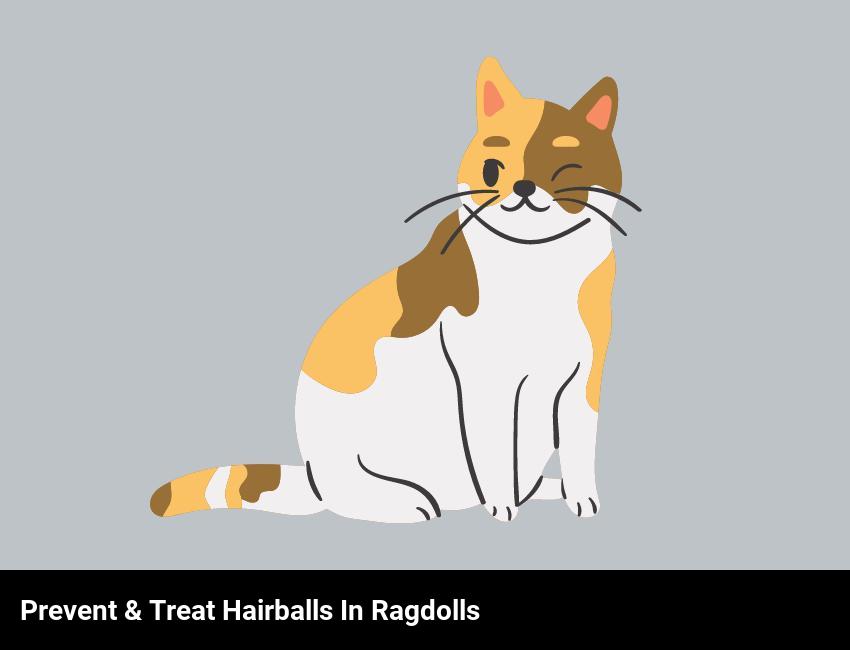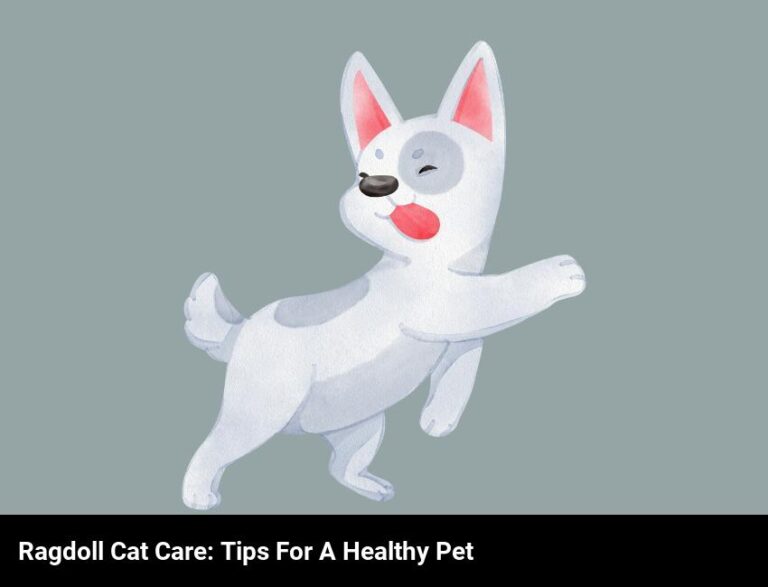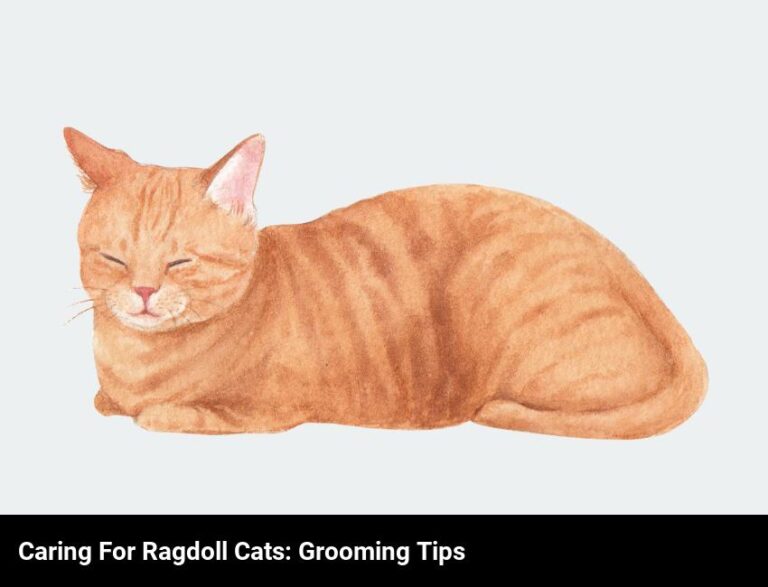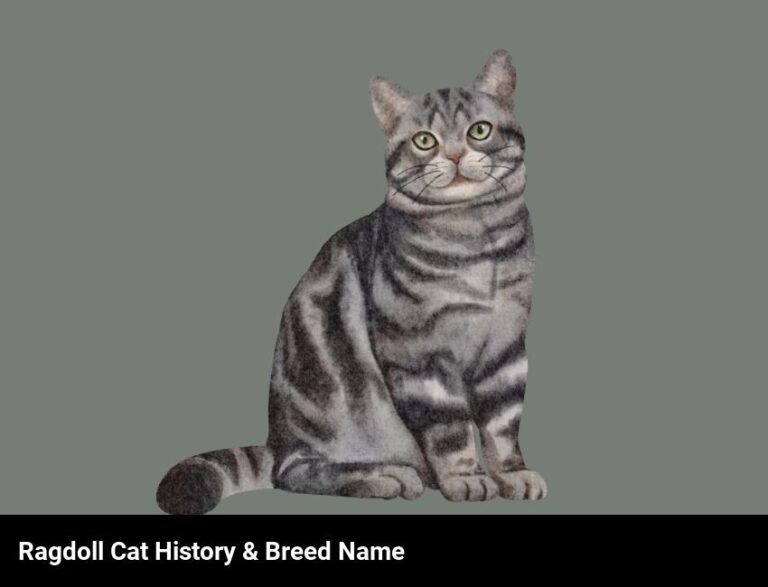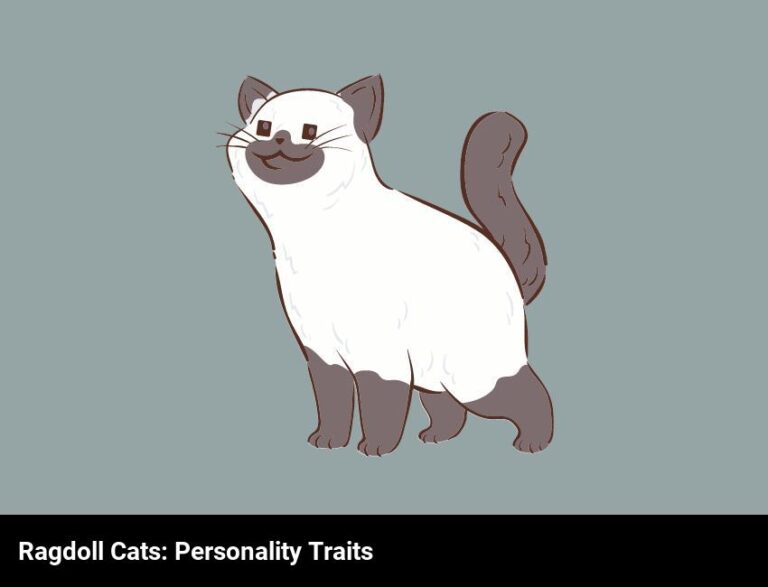How To Prevent And Treat Hairballs In Ragdolls
To prevent and treat hairballs in Ragdolls, groom them regularly and feed them a high-fiber diet. Regular brushing helps remove excess hair from the coat and prevent it from being ingested. Adding fiber to the diet can help keep hairballs from forming. If a hairball does occur, administer a hairball remedy for cats to help it pass through the digestive tract.
As a Ragdoll owner, I know how frustrating it can be when my furry companion develops a dreaded hairball. Not only does it mean a messy cleanup for me, but it can also be a sign of a more serious health issue for my beloved cat. Unfortunately, Ragdolls are prone to hairballs due to their long, fur-covered bodies, but, thankfully, there are ways to help prevent and treat them.
In this blog, I’ll be discussing the signs and symptoms of hairballs in Ragdolls, and ways we can help prevent and treat them. I’ll be covering dietary changes to help reduce hairballs, grooming tips to keep their coats healthy, home remedies to treat hairballs, and professional treatment options when necessary. Finally, I’ll discuss ways to reduce stress in Ragdolls, which can also play a role in preventing hairballs.
What is a hairball and how do ragdolls get them?
Have you ever heard of a hairball? It’s a clump of fur and other debris that cats sometimes cough up. Cats can get them from excessive grooming, and Ragdolls, in particular, are prone to them due to their thick, long coats.
So what’s the deal with hairballs? They’re a normal part of a cat’s life, and they’re usually harmless. However, if your Ragdoll is coughing up a lot of hairballs, it could be a sign of an underlying health issue, so it’s important to keep an eye on them.
The best way to prevent hairballs in your Ragdoll is to brush them regularly. This will help remove any excess fur that could otherwise end up in their stomach and eventually be coughed up. It’s also a great way to bond with your cat and keep their coat shiny and healthy.
In addition to brushing, you can also give your Ragdoll special hairball remedies. These are available in the form of treats or special diets and can help reduce the amount of hairballs your cat gets.
If your cat is coughing up hairballs, you should take them to the vet for a check-up. They may need to be treated for an underlying health issue, or the vet may recommend a special diet or supplement to help with the hairballs.
In short, hairballs are a normal part of a Ragdoll’s life, but if your cat is coughing up a lot of them, it could be a sign of an underlying health issue, so it’s important to take them to the vet for a check-up. The best way to prevent hairballs is to brush your Ragdoll regularly and give them special treatments or diets, if needed.
What causes hairballs in ragdolls?
Hairballs in Ragdolls can be caused by several factors. The most common cause is a poor diet. A poor diet may not provide enough of the necessary vitamins and minerals to keep your Ragdoll’s coat healthy. This can lead to the fur becoming matted, which can then be ingested by your cat. Another cause is overgrooming. Ragdolls tend to groom themselves more often than other cats, which can lead to more fur being ingested. Finally, some Ragdolls may have a sensitivity to certain types of food, which can also lead to hairballs.
Understanding the causes of hairballs in Ragdolls is the first step to preventing them. Providing a nutritious, balanced diet is essential for your cat’s overall health and will help to keep their coat healthy and free from matting. Additionally, brushing your Ragdoll regularly can help to reduce shedding and prevent the build-up of mats. Finally, if your cat does have any food allergies, be sure to consult with your veterinarian to find an appropriate food for them.
By understanding and addressing the causes of hairballs in Ragdolls, you can help to keep your cat healthy and free from hairballs.
Dietary changes to help prevent hairballs in ragdolls
If you have a Ragdoll cat, you’re probably already familiar with the dreaded hairball! To help prevent these from occurring, dietary changes can be a great way to start.
First, make sure your Ragdoll is eating a high-quality diet that is specifically formulated for cats. This kind of food contains the right nutrients to maintain a healthy coat and skin, while reducing the amount of hair your cat sheds. You may also want to look for a diet that contains omega-3 fatty acids, which can help keep skin and fur healthy.
Second, adding a wet food to your cat’s diet can help reduce hairballs. Wet food is higher in moisture than dry food, and can help cats stay hydrated and healthy. It also contains more protein and other nutrients, which can help keep your cat’s coat and skin in great condition.
Third, adding a bit of pumpkin to your cat’s food can help reduce the formation of hairballs. Pumpkin is high in soluble fiber, which helps the hair move through the digestive tract more easily. A tablespoon of pumpkin puree added to your cat’s food can help reduce the amount of hairballs your cat produces.
Finally, brushing your cat regularly can help reduce the amount of hair that ends up in your cat’s stomach. Brushing your cat several times a week will help remove loose fur and reduce the amount of fur your cat swallows.
By making a few simple dietary changes, you can help prevent hairballs in your Ragdoll cat. A high-quality diet, a bit of wet food, a tablespoon of pumpkin puree, and regular brushing can all help reduce hairballs in your furry friend.
How to prevent hairballs in ragdolls?
You can prevent hairballs in your Ragdoll by following these simple steps:
- Brush your Ragdoll regularly – this helps remove dead hair and reduce the chances of hairballs forming.
- Give your Ragdoll plenty of exercise – this helps the hair move through their digestive system more quickly.
- Feed your Ragdoll a high-quality, well-balanced diet – this ensures their digestive system is functioning properly.
- Supplement with omega-3 fatty acids – this helps keep their skin and coat in good condition, which reduces the amount of hair they shed.
- Keep the litter box clean – this reduces the chances of your Ragdoll ingesting hair when grooming.
- Use an enzyme-based cleaner – this helps break down the protein bonds in the hair, making it easier for your Ragdoll to digest.
Grooming tips to help prevent hairballs in ragdolls
Grooming your Ragdoll on a regular basis is key to preventing hairballs. Brush your Ragdoll at least once a week, using a comb and a brush designed for long-haired cats. This will help remove any excess fur that your cat may have swallowed while cleaning itself.
- Bathe your Ragdoll regularly. Bathing your cat will help get rid of excess fur that can accumulate in its digestive system. Give your Ragdoll a bath every month or so, using a cat shampoo specifically designed for long-haired cats.
- Trim your Ragdoll’s nails. Keeping your Ragdoll’s nails trimmed will help reduce the amount of fur it swallows while grooming itself. Trim your Ragdoll’s nails every couple of weeks to keep them short and blunt.
- Feed your Ragdoll high-quality cat food. Feeding your Ragdoll a good-quality diet can help reduce the amount of fur it swallows while grooming. Look for a diet specifically designed for long-haired cats that contains omega fatty acids and other essential vitamins and minerals.
- Give your Ragdoll plenty of water. Staying hydrated is key to preventing hairballs in Ragdolls. Make sure your Ragdoll has access to fresh, clean water at all times.
Tips to help reduce stress in ragdolls to prevent hairballs
Brush your Ragdoll’s fur regularly: Regular brushing of your cat’s fur helps to reduce stress and prevent the formation of hairballs. When brushing your Ragdoll, be sure to use a brush that is made specifically for cats. This will help to keep your cat’s coat looking shiny and healthy.
- Provide your Ragdoll with plenty of playtime: A healthy and happy Ragdoll is a Ragdoll that is less likely to develop hairballs. Playing with your cat is a great way to reduce stress and keep them active. Try to provide your cat with plenty of interactive toys that keep them entertained and engaged.
- Make sure your Ragdoll has a safe space: Providing your Ragdoll with a safe space to rest and relax is key to reducing stress. Make sure your cat has plenty of places to hide, such as cat trees and scratching posts. This will help your Ragdoll feel secure and can reduce their stress levels.
- Give your Ragdoll plenty of attention: Being around your Ragdoll and playing with them can be a great way to reduce stress. Make sure to give your cat plenty of love and attention, as this is essential for reducing their stress levels.
- Feed your Ragdoll a healthy diet: An unhealthy diet can contribute to stress levels in cats, so make sure to feed your Ragdoll a balanced and nutritious diet. This will help to keep your cat healthy and reduce the risk of hairballs.
Home remedies to treat hairballs in ragdolls
If you want to treat your Ragdoll cat’s hairballs, there are many home remedies you can try. First, start by increasing your Ragdoll’s daily intake of fiber. You can add a small amount of canned pumpkin to your cat’s meals, or try giving them a teaspoon of organic psyllium husk powder mixed into a bit of wet food. This will help your cat pass any hairballs that may have formed.
Next, consider adding fish oil to your Ragdoll’s diet. You can get fish oil in either liquid or capsule form, and it can help reduce hairball buildup. Just make sure to get a quality product with no added preservatives.
If your Ragdoll is having a lot of trouble with hairballs, you may want to try adding some natural supplements to their diet. Products like slippery elm bark and marshmallow root can help soften their coat and move the hairballs through their digestive system.
Finally, regular grooming can help you keep your cat’s hairballs under control. Brush your Ragdoll daily to remove loose fur, and make sure to check them for mats and tangles. This will help keep their coat healthy and reduce the amount of hair they swallow.
With the right diet, supplements, and grooming routine, you can help prevent and treat hairballs in your Ragdoll. By taking the time to care for your furry friend, you can ensure they stay healthy and happy.
Professional treatment options for hairballs in ragdolls
If your Ragdoll has a hairball, there’s no need to panic. Like other long-haired cats, Ragdolls are prone to hairballs, but there are several professional treatment options available to help your kitty.
First, you should make sure your Ragdoll is getting regular grooming. This is especially true for Ragdoll cats that have thicker coats, as they tend to have more hairballs. Grooming will help reduce the amount of hair in their stomachs, as well as make it easier for you to identify any potential problems.
You should also consider switching your Ragdoll to a specially formulated cat food. Many cat foods contain fiber, which can help reduce hairballs. Additionally, there are cat foods that are specifically designed to reduce hairballs, so look for those when shopping.
If your Ragdoll develops a hairball, there are several professional treatments available. Your veterinarian may suggest a laxative to help your cat pass the hairball. Additionally, they may also recommend giving your cat a hairball remedy, which can help coat the hairball and make it easier for your cat to pass it.
Finally, your veterinarian may also suggest giving your cat a regular dose of liquid paraffin. This can help coat the hairballs, making it easier for them to pass through your cat’s digestive system.
Overall, there are several professional treatment options available to help your Ragdoll if he or she develops a hairball. Make sure your cat is getting regular grooming, and consider switching to a specially formulated cat food. Additionally, talk to your veterinarian about using a laxative, hairball remedy, or liquid paraffin to help your cat pass the hairball.
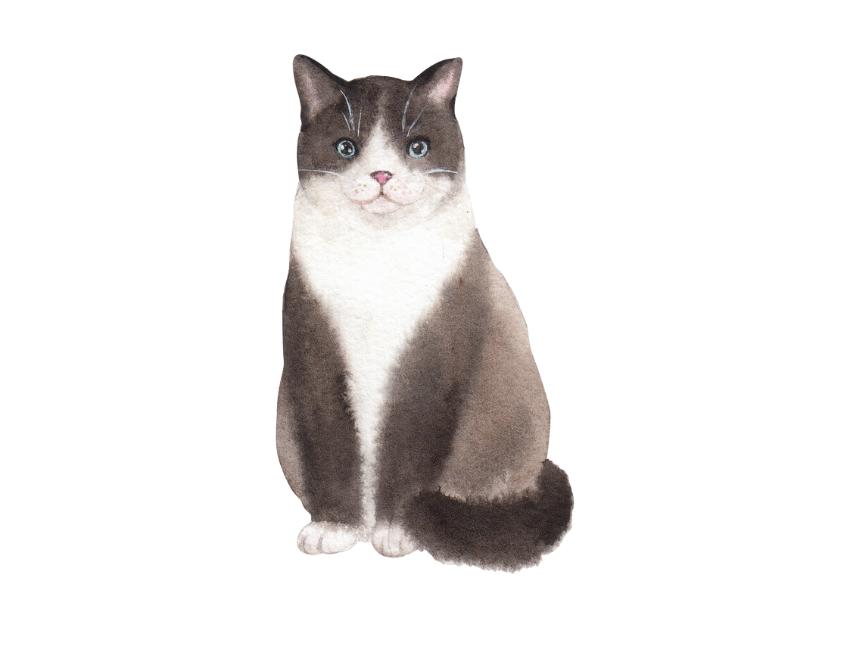
Frequently Asked Questions
How can you tell if your ragdoll has a hairball?
If your Ragdoll has a hairball, you may notice that they start to vomit or hack up fur balls. Other signs to look out for include loss of appetite, reduced activity, and constipation. If you believe your Ragdoll has a hairball, take them to the vet for a check-up.
What habits can you change to help reduce hairballs in ragdolls?
Making changes to your Ragdoll’s lifestyle can help reduce hairballs. Ensure they get regular grooming, brush their coat daily, feed them a high-quality diet, and use supplements to help their digestion. Additionally, providing them with plenty of exercise and mental stimulation can help keep their fur healthy and reduce their shedding.
What are some natural hairball remedies for ragdolls?
There are a few natural remedies that can help keep hairballs away from your Ragdoll. Brushing your feline friend daily with a soft brush will help remove excess fur before it can get swallowed. Adding a teaspoon of olive oil to your cat’s food each day can also help them pass a hairball more quickly. Natural supplements such as pumpkin, coconut oil, and probiotics can also help with digestion and keep hairballs at bay.
Is there a way to make brushing your ragdoll’s coat easier?
Yes! Brushing your Ragdoll’s coat regularly is the best way to keep them looking and feeling their best, while also preventing hairballs. Regular brushing will help remove excess fur, which can otherwise clog up their digestive system. Invest in a good quality brush and comb, and make sure to brush your cat at least once a week. Brushing your cat’s coat is an easy and enjoyable activity that can help keep them healthy and happy.
How can you check your ragdoll’s stomach for hairballs?
To check your Ragdoll’s stomach for hairballs, start by feeling the area around their rib cage. If your cat has a hairball, they may have a lump or bulge in that area. You can also look for signs of discomfort such as excessive grooming, retching, or vomiting. If you find any of these symptoms, it’s best to consult your vet.

